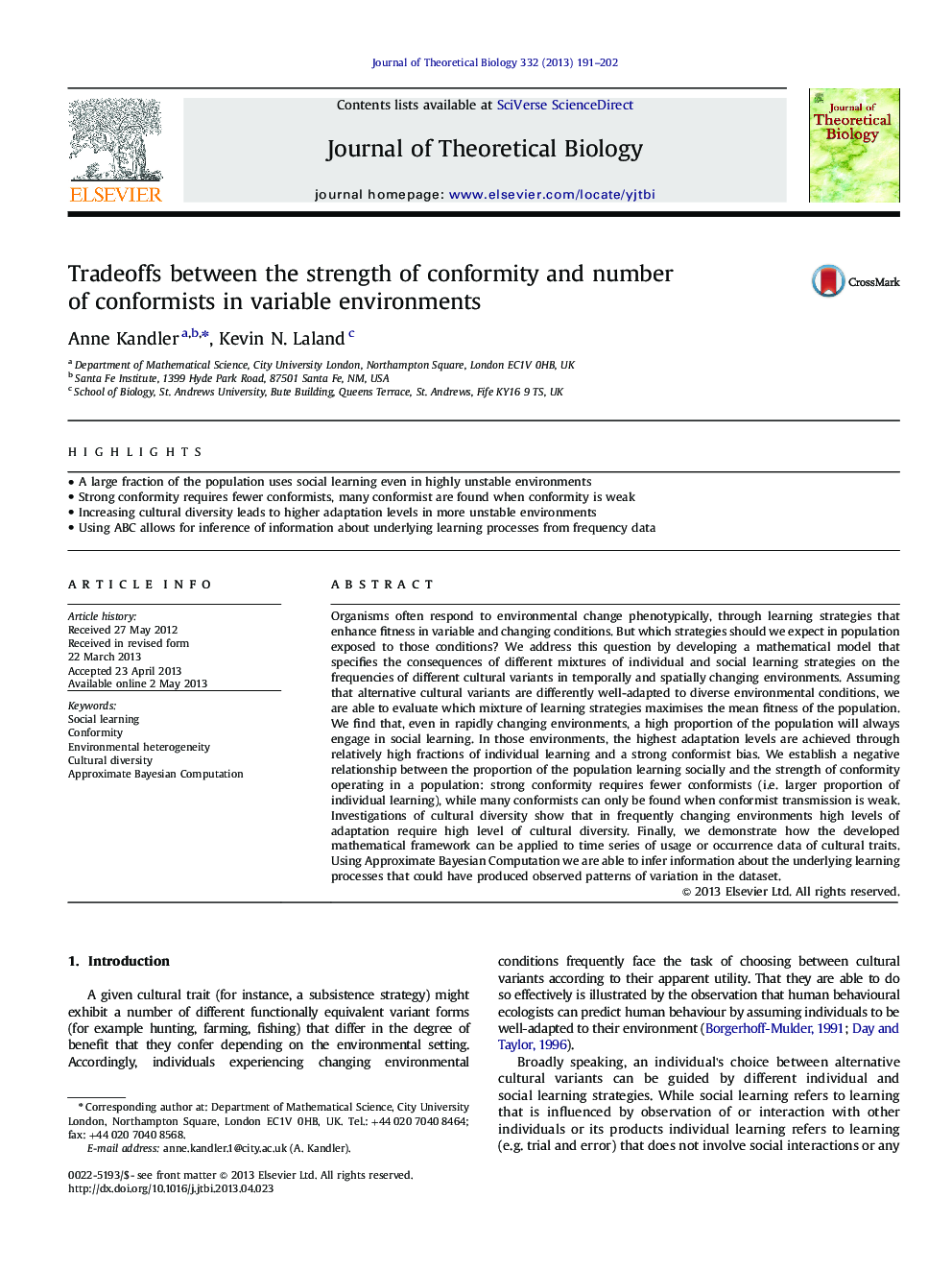| کد مقاله | کد نشریه | سال انتشار | مقاله انگلیسی | نسخه تمام متن |
|---|---|---|---|---|
| 4496348 | 1623878 | 2013 | 12 صفحه PDF | دانلود رایگان |

• A large fraction of the population uses social learning even in highly unstable environments
• Strong conformity requires fewer conformists, many conformist are found when conformity is weak
• Increasing cultural diversity leads to higher adaptation levels in more unstable environments
• Using ABC allows for inference of information about underlying learning processes from frequency data
Organisms often respond to environmental change phenotypically, through learning strategies that enhance fitness in variable and changing conditions. But which strategies should we expect in population exposed to those conditions? We address this question by developing a mathematical model that specifies the consequences of different mixtures of individual and social learning strategies on the frequencies of different cultural variants in temporally and spatially changing environments. Assuming that alternative cultural variants are differently well-adapted to diverse environmental conditions, we are able to evaluate which mixture of learning strategies maximises the mean fitness of the population. We find that, even in rapidly changing environments, a high proportion of the population will always engage in social learning. In those environments, the highest adaptation levels are achieved through relatively high fractions of individual learning and a strong conformist bias. We establish a negative relationship between the proportion of the population learning socially and the strength of conformity operating in a population: strong conformity requires fewer conformists (i.e. larger proportion of individual learning), while many conformists can only be found when conformist transmission is weak. Investigations of cultural diversity show that in frequently changing environments high levels of adaptation require high level of cultural diversity. Finally, we demonstrate how the developed mathematical framework can be applied to time series of usage or occurrence data of cultural traits. Using Approximate Bayesian Computation we are able to infer information about the underlying learning processes that could have produced observed patterns of variation in the dataset.
Journal: Journal of Theoretical Biology - Volume 332, 7 September 2013, Pages 191–202